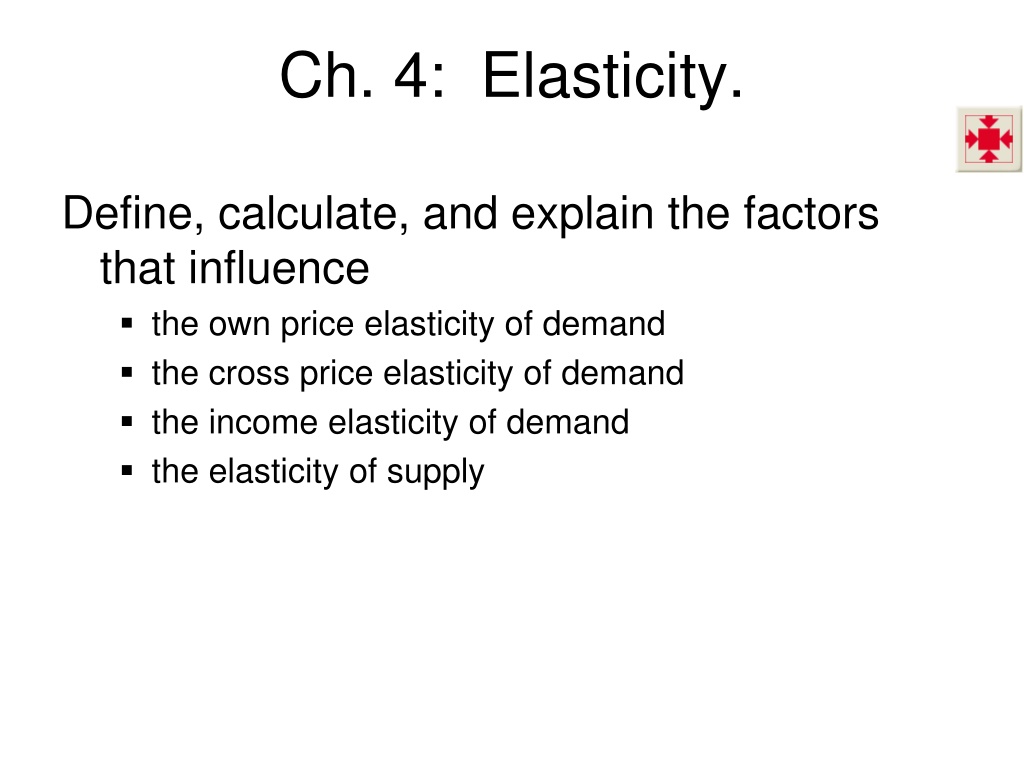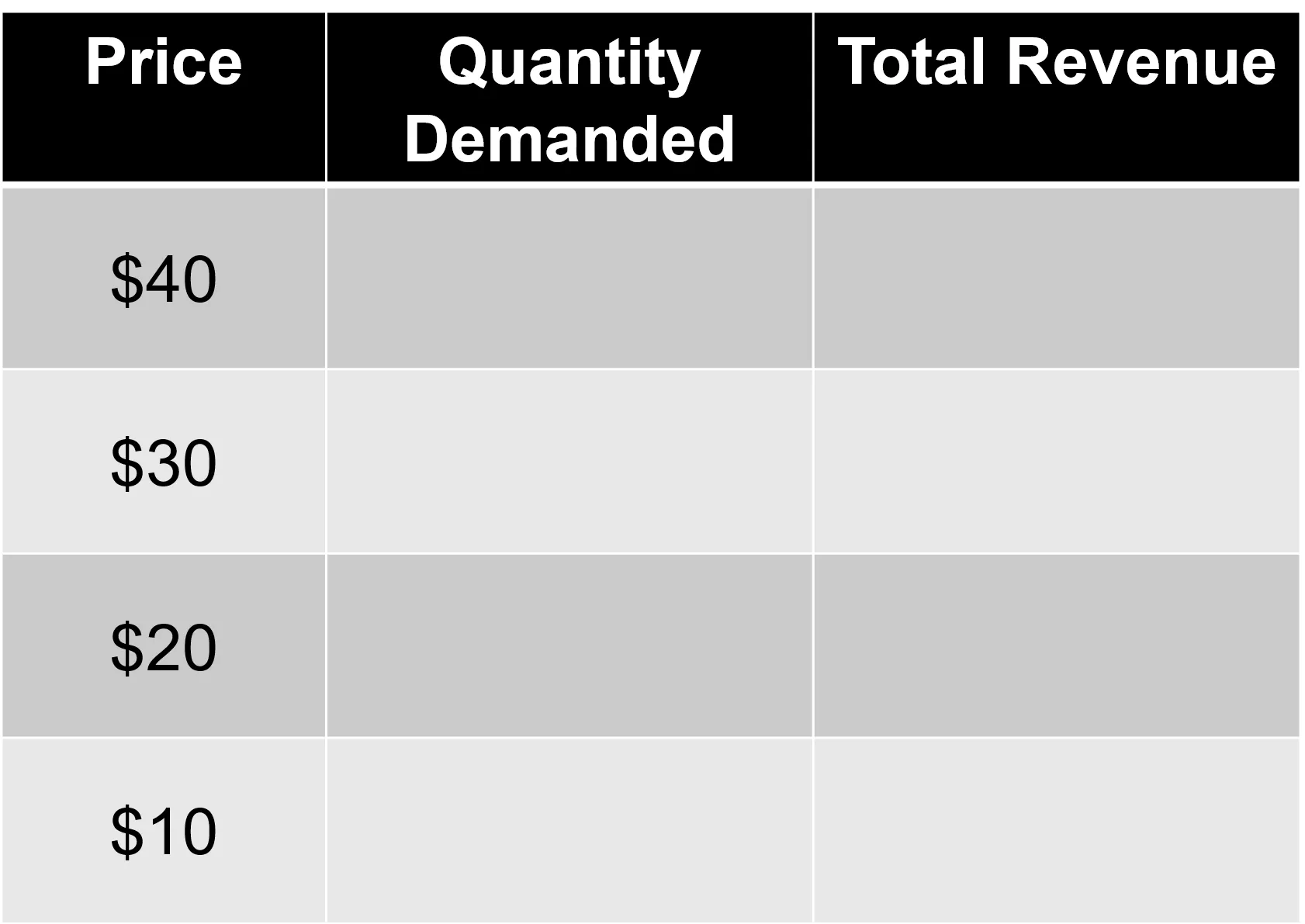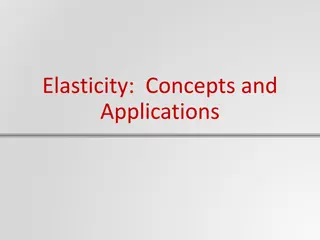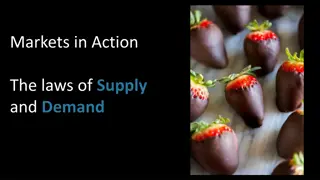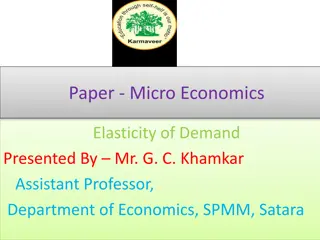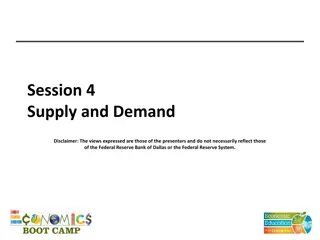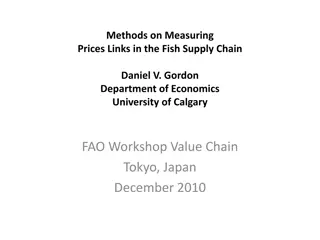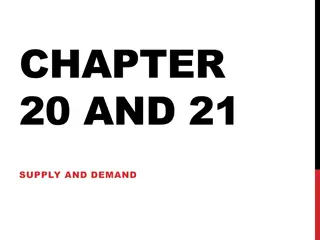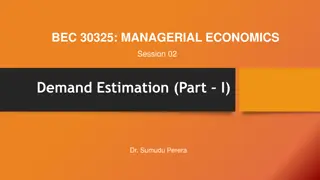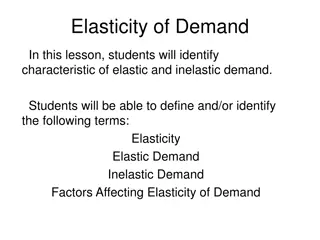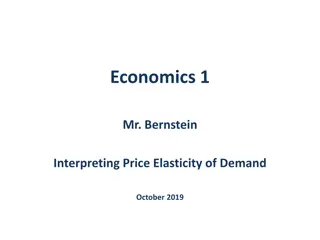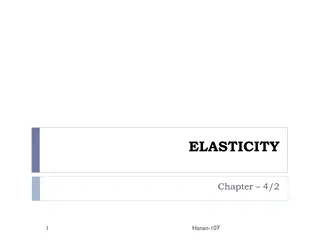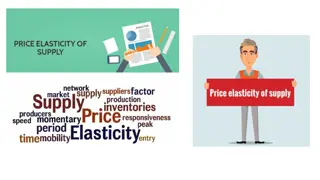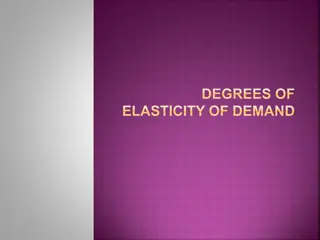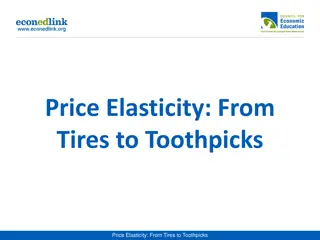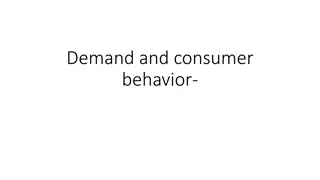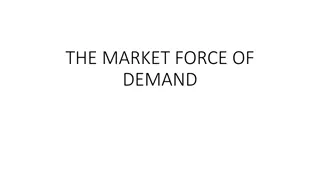Price Elasticity of Demand in Economics
Price elasticity of demand is a crucial concept in economics that measures how much the quantity demanded of a good changes in response to a change in its price. Factors influencing own-price elasticity, cross-price elasticity, income elasticity, and supply elasticity are explained and illustrated using examples. Elasticity values determine whether demand is elastic, inelastic, or unit elastic, impacting total revenue calculations.
Uploaded on Sep 29, 2024 | 0 Views
Download Presentation

Please find below an Image/Link to download the presentation.
The content on the website is provided AS IS for your information and personal use only. It may not be sold, licensed, or shared on other websites without obtaining consent from the author.If you encounter any issues during the download, it is possible that the publisher has removed the file from their server.
You are allowed to download the files provided on this website for personal or commercial use, subject to the condition that they are used lawfully. All files are the property of their respective owners.
The content on the website is provided AS IS for your information and personal use only. It may not be sold, licensed, or shared on other websites without obtaining consent from the author.
E N D
Presentation Transcript
Ch. 4: Elasticity. but1 Define, calculate, and explain the factors that influence the own price elasticity of demand the cross price elasticity of demand the income elasticity of demand the elasticity of supply
Demand for parking garage passes Price Quantity Demanded but1 Total Revenue $40 $30 $20 $10
Price Elasticity of Demand but1 Price elasticity of demand units-free measure of the responsiveness of the quantity demanded of a good to a change in its price, ceteris paribus. % quantity % demanded = e price
Price Elasticity of Demand but1 % Q = Q/Qavg = 2/10 = .2 % P = P/Pavg = -$1/$20 = -.05 e = .2/.05 =4
Price Elasticity of Demand but1 By using the average price and average quantity, we get the same elasticity value regardless of whether the price rises or falls. Measuring as % changes leaves the elasticity value the same ( units free ). Although the formula yields a negative value for elasticity because price and quantity move in opposite directions, we report the absolute value.
Demand for parking garage passes Total Revenue Demanded but1 Price Quantity Elasticity $40 $30 $20 $10
Price Elasticity of Demand but1 Inelastic and Elastic Demand if e>1: elastic if e=1: unit elastic if e<1: inelastic Shape of Perfectly inelastic demand curve (e=0) Perfectly elastic demand curve (e= infinite)
Price Elasticity of Demand but1 At prices above the mid-point of the demand curve, demand is elastic. At prices below the mid-point of the demand curve, demand is inelastic.
Price Elasticity of Demand but1 Total Revenue and Elasticity TR=P*QD When P changes, TR could rise or fall because QD moves in opposite direction.
Price Elasticity of Demand but1 % TR = % P + % Q = % P - % P(e) = % P(1-e) If demand is elastic (e>1), P increase TR decreases P decrease TR increases If demand is inelastic (e<1), P increase TR increases P decrease TR decreases If demand is unitary elastic, P increase or decrease TR unchanged.
Price Elasticity of Demand but1 As P falls from $25 to $12.50, D is elastic, and TR rises. At $12.50, D is unit elastic and TR stops increasing. As P falls from $12.50 to 0, D is inelastic, and TR decreases.
Price Elasticity of Demand but1 The elasticity of demand for a good depends on: The number & closeness of substitutes The proportion of income spent on the good The time elapsed since a price change
More Elasticities of Demand but1 Cross Elasticity of Demand measures responsiveness of demand for a good to a change in the price of another good. exy= % quantity demanded for x % change in price of y exy > 0 substitutes exy <0 complements
More Elasticities of Demand but1 Income Elasticity of Demand measures how the quantity demanded of a good responds to a change in income, ceteris paribus. eI = % in quantity demanded % in income eI >0 normal good eI >1 luxury good eI <0 inferior good
Price Elasticity of Supply but1 A change in demand causes A larger change in equilibrium price if supply is supply is steeper, A smaller change in equilibrium quantity if supply is steeper.
Elasticity of Supply but1 Elasticity of supply measures the responsiveness of the quantity supplied to a change in the price of a good when all other influences on selling plans remain the same. % quantity supplied = es % price
Elasticity of Supply but1
Elasticity of Supply but1 Factors That Influence the Elasticity of Supply Elasticity of supply for inputs The time frame for supply decisions Storage costs
